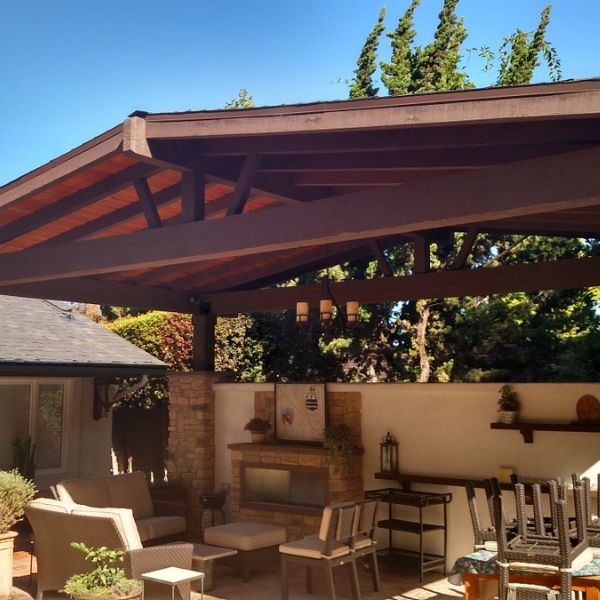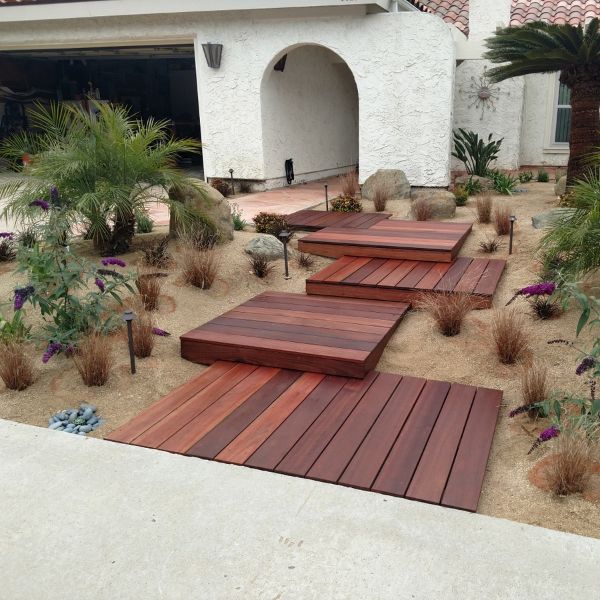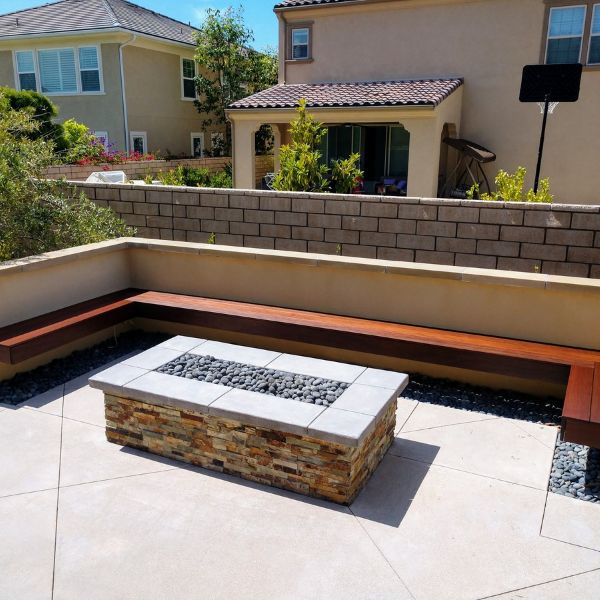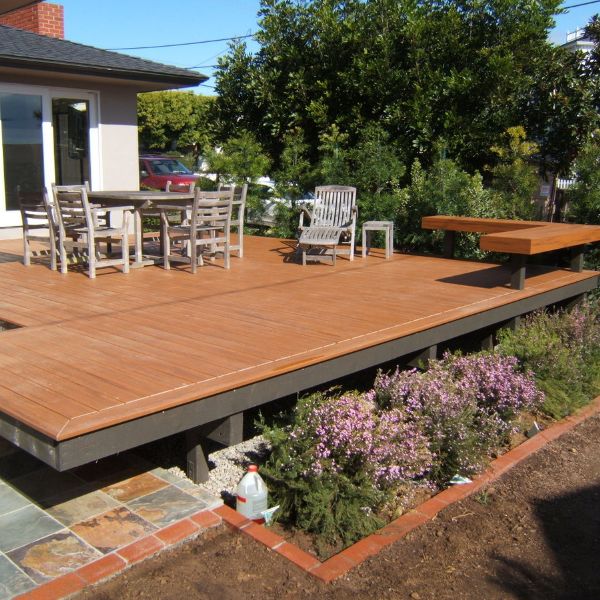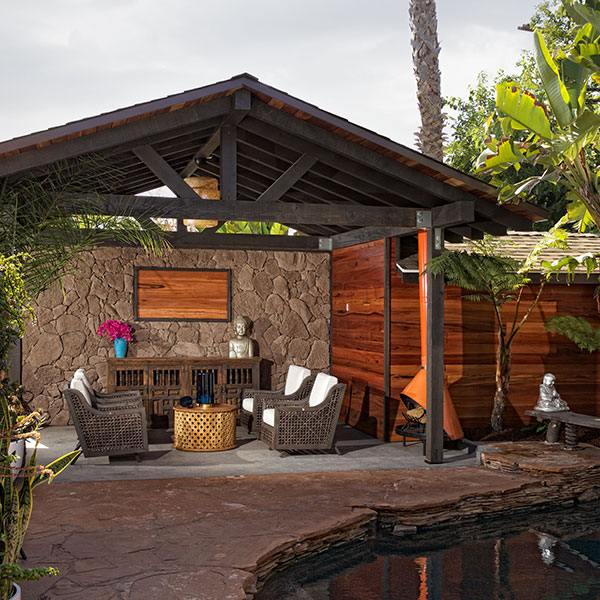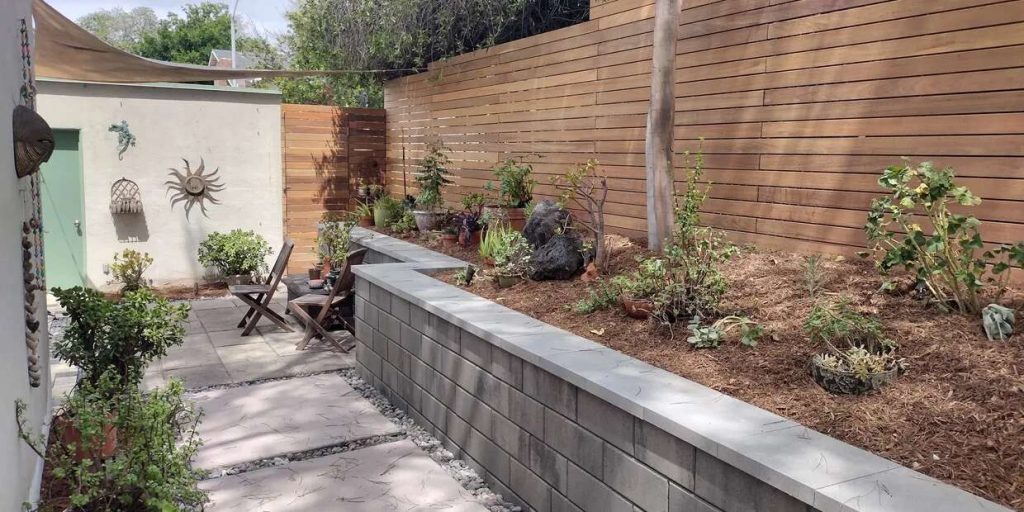
See How Our Landscape Contractor in San Diego Can Transform Your Outdoor Living Space
If you’re ready to transform your outdoor living space into the outdoor oasis of your dreams, landscape construction is the way to go. However, projects involving land management and construction require expertise and experience to truly make a space shine. That’s why hiring a professional Landscape Contractor in San Diego is the key to transforming your outdoor space into something truly breathtaking.
Our professional landscape contractor in San Diego boasts the expertise, experience, and techniques necessary to bring your dream outdoor space to life. From developing unique landscaping ideas to assisting with material selection and placement, they can guide you through the landscape construction process. They also provide insight into the best types of materials to use for your project, as well as help you select the perfect plants, paving materials, and more.
Not only will a landscape contractor turn your vision into an outdoor reality, but they can also save you time and money. Skilled professionals can help you avoid costly errors and show you how to maximize your budget and timeline. When you hire experts, you’ll also rest easy knowing that your landscape will look beautiful and last for years to come.
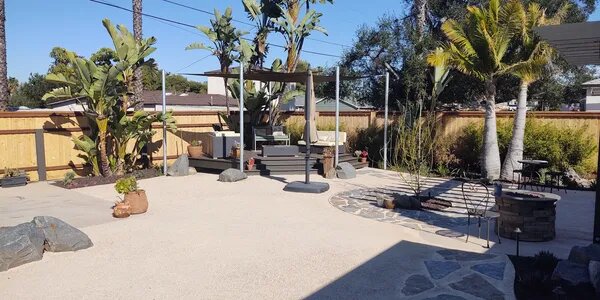
Landscape Design
Landscape design is the process of planning and creating outdoor spaces that are functional, aesthetically pleasing, and sustainable. Landscape designers work with our landscape contractors in San Diego and use a combination of artistic and technical skills to create outdoor spaces that meet the needs and preferences of the client, as well as the local climate and ecosystem.
Some common elements of landscape design include:
- Choosing the right plants, trees, and other vegetation for the location, taking into account factors such as the climate, soil type, and sun exposure
- Designing functional outdoor spaces, such as patios, decks, walkways, and outdoor kitchens
- Creating visual interest and aesthetic appeal through the use of color, texture, and form
- Incorporating elements such as water features, lighting, and outdoor furniture
- Ensuring that the landscape is sustainable and eco-friendly, by using native plants, conserving water, and incorporating green infrastructure
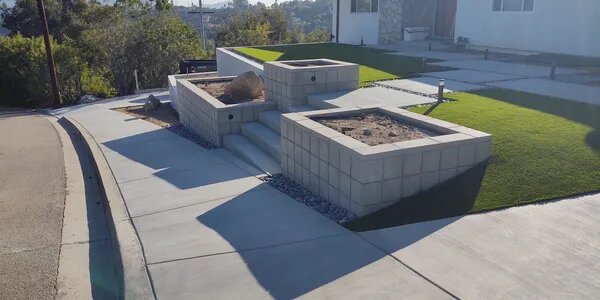
Landscape Installation
Landscape installation is the process of turning a landscape design plan into a finished outdoor space. As a trusted landscape contractor in San Diego, we handle every aspect of the installation—from site preparation and planting trees and shrubs to building hardscaping features like retaining walls and walkways and installing efficient irrigation systems. Our goal is to bring your vision to life with expert craftsmanship and attention to detail.
The specific steps involved in landscape installation may vary depending on the size and complexity of the project, as well as the specific design elements and materials being used. Some common steps in the landscape installation process include:
- Preparing the site: This may involve grading the land, removing existing vegetation, and preparing the soil for planting.
- Planting trees and plants: This includes selecting and sourcing the right plants and trees for the location, as well as preparing the soil and planting them according to the design plan.
- Installing hardscaping elements: This may include constructing retaining walls, walkways, patios, and other structures using materials such as brick, stone, or concrete.
- Setting up irrigation systems: This involves installing and configuring irrigation systems to ensure that the plants and trees receive the necessary amount of water to thrive.
The Landscape Construction Process
The landscape construction process is a detailed and complex undertaking that demands precision, planning, and expertise at every stage. No two projects are the same—each landscape has its own set of variables, from site conditions to design goals. That’s why choosing the right landscape contractor in San Diego is crucial. With the right professional, you can ensure your project is executed with quality craftsmanship, durability, and long-term beauty. Call Jeff at Wilson Woodscape to get started on your transformation today.
Typically, landscape construction begins with a thorough planning phase. This includes establishing a budget, researching materials, evaluating the site, and selecting the desired styles and plantings. Once that’s complete, the design phase begins, focusing on the layout, hardscaping elements like patios and walkways, irrigation planning, and sourcing materials. The final phase—installation—brings the vision to life with tasks like soil preparation, grading, planting, paving, and more.
There’s often debate over whether to take a DIY approach or hire a professional. While doing it yourself might seem cost-effective initially, the risks of errors, delays, and costly equipment can quickly outweigh the savings. A professional landscape contractor brings not only efficiency but also the tools, knowledge, and experience necessary to deliver lasting results.
Site Conditions, Plans, and Design
Every successful landscape project begins with understanding the unique characteristics of the land. From soil type, slope, and drainage to sun exposure, vegetation, and climate—each factor influences the outcome. Addressing these site-specific conditions ensures the design and construction are both functional and sustainable.
Permits and regulations are another important piece of the puzzle. An experienced contractor will navigate these requirements with ease, helping you avoid delays and keeping the project on track.
Once approvals are in place, detailed plans for both design and construction are essential. A clear, well-documented plan minimizes confusion, reduces costly errors, and sets the entire team up for success. After planning, the final step is assembling a skilled, reliable crew to bring the project to life.
When you work with a qualified Landscape Contractor in San Diego, you’re not just hiring a team—you’re investing in peace of mind, long-lasting quality, and a space that’s truly built to last.
Would you like a shorter version as well for web use or a landing page?
Skills and Qualifications of a Landscape Contractor
When it comes to finding the right landscape contractor for a job, there are a few aspects to consider. The most important skills and qualifications of a landscape contractor are:
- Experience
- Knowledge
- Attention to detail
Experienced contractors who have been in business for several years will be more competent when it comes to understanding every aspect of the design and installation that comes with landscaping. Having an extensive portfolio of past projects is also indicative of competence and can provide potential customers with an idea of what the contractor is capable of doing.
Besides technical capabilities, having excellent communication skills is necessary for any landscape contractor. Communication allows clients to have an accurate understanding of the project and will allow contractors to listen to suggestions to deliver the best possible results for their customers.
Assessing a contractor’s qualifications regarding safety is paramount for any landscaping endeavor. Accidents can occur if costly mistakes are made due to negligence or lack of safety protocols followed by said contractor. Having certifications from organizations such as the Interlocking Concrete Pavement Institute (ICPI) or Nationally Certified Landscape Professionals (NCLP) provides customers with an added assurance that their project is being handled professionally.
Quality Materials and Workmanship
The skills and qualifications of a landscape contractor are only part of the equation when it comes to successful landscaping design and construction. Quality materials and workmanship are also required to ensure that the project can stand the test of time. Materials such as stones, bricks, pavers, timber, and concrete should be chosen for their durability, visual aesthetics, and eco-friendly properties. The contractor should have a reputable supplier who can provide these materials at a reasonable cost without compromising quality.
An experienced landscape professional should be able to select and provide quality materials, as well as adhere to strict safety protocols during the construction phase. This includes following industry-standard safety procedures like wearing personal protective equipment when working with power tools and machinery, keeping worksites free of debris, using safe ladder practices when necessary, and disposing of waste properly. Such practices will minimize the risk of accidents or property damage by ensuring that construction jobs are executed competently and professionally.
Plant Materials and Outdoor Structures
Materials and workmanship are paramount to successful landscape construction and so is the selection of plants and outdoor structures. Choosing which plants and outdoor elements to install requires careful consideration of local climate, soil conditions, water requirements, and other factors that will ensure their long-term health and lasting beauty. It’s also critically important to thoughtfully consider the aesthetics of the space as a whole, and how the selection of one plant or structure might affect existing plants or how they interact with each other.
There are arguments for both sides of this debate: it’s sometimes argued that installing hardscaping elements such as walkways and retaining walls can provide permanence and a feeling of security in the space; while others may argue that too much hardscaping in an outdoor space can be quite overwhelming and take away from the naturalistic aesthetic of a landscape.
When choosing either type of material – plants or hardscapes – trusting a professional’s expertise can guarantee success. Quality design aspects with thoughtful consideration for material selection can turn an outdoor space into something truly extraordinary.
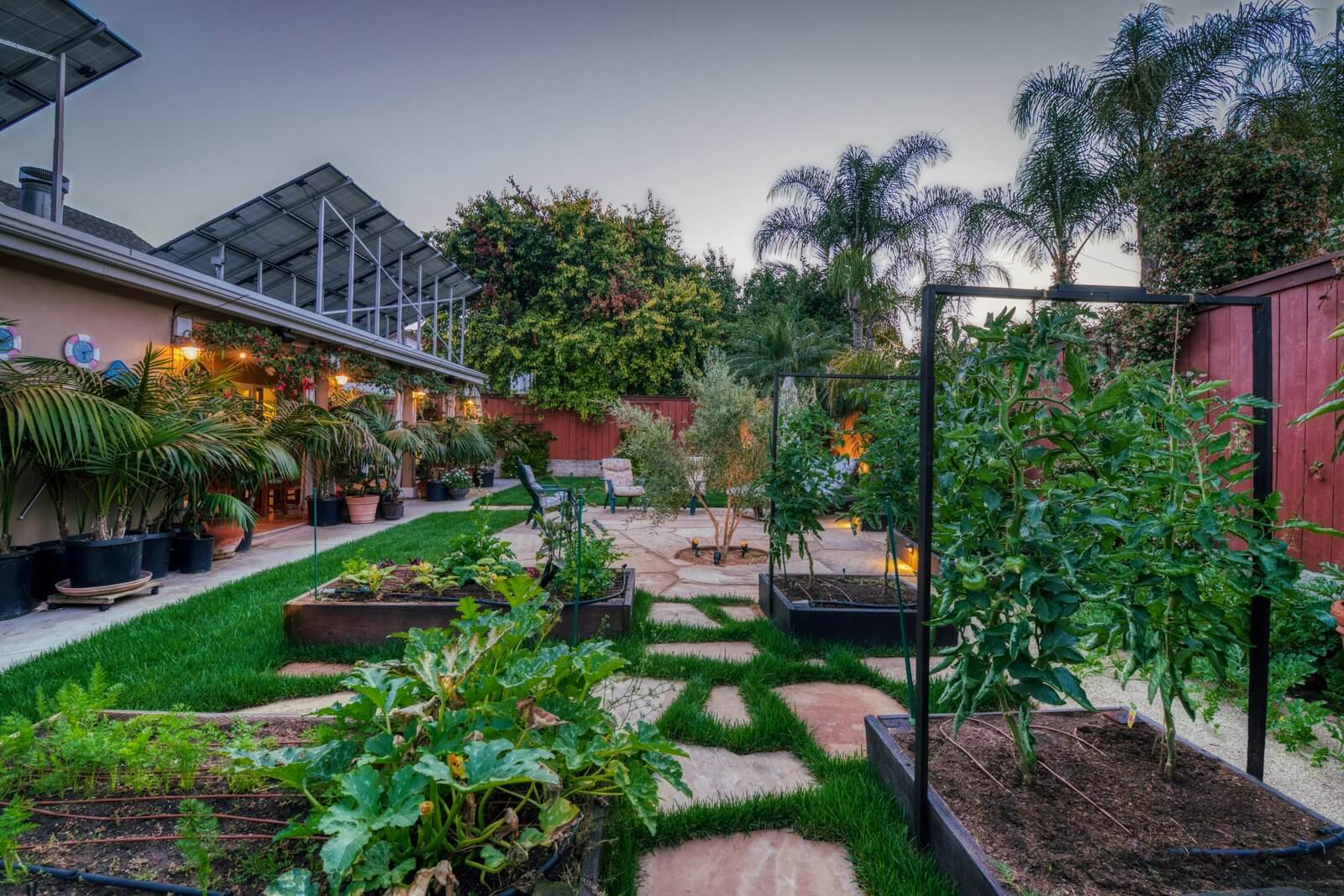
Safety and Area of Expertise
Safety is paramount when it comes to landscape construction and needs to be taken into account before any work starts. You’ll want to consider the risks present when working in outdoor spaces, as well as the expertise required of a professional landscaper.
When constructing outdoor spaces, there can be potential hazards like exposed roots or hazardous plants, such as Poison Ivy. Professionals must be aware of specific safety codes and regulations in their jurisdiction. They must also be aware of any underground utilities that may exist beneath the surface.
Not just anyone can perform satisfactory landscape construction work; it takes experienced professionals with specialized skill sets – due to the complexities involved–to achieve optimal outdoor space results. Landscaping professionals must make sure they’re up-to-date on the best practices for planting and maintenance, as well as system components and installation techniques related to creating any permanent structures like a pond or fountain.
By making sure every step of the process is taken into consideration, from planning and designing to building and maintaining outdoor spaces, safety can be maintained while providing aesthetically pleasing results for years.
Frequently Asked Questions
=
The most common types of landscape construction are hardscaping, softscaping, and lighting.
- Hardscaping is the practice of installing man-made structures to enhance an outdoor space, such as retaining walls, patios, and walkways.
- Softscaping focuses on visible elements like gardens and trees that can create a focal point or provide shade.
- Lighting adds character and definition to an outdoor space by using light fixtures, spotlighting, and both solar and electrical power.
The qualifications required for landscape construction depend on the specific job. Generally, professionals should have deep knowledge and understanding of basic landscaping elements, including soil management, drainage, hardscapes, plant selection and placement, and proper irrigation techniques. Additionally, landscape construction professionals should be familiar with building codes and safety regulations.
Having an understanding of structural design principles (including how to use CAD software), as well as business management and marketing skills, is beneficial when working in this field.
The types of materials used for landscape construction will depend on the project, but some common materials are soil, concrete, stones, bricks, sand, gravel, compost, and mulch. Ultimately, the materials used will depend upon the design of the landscape you’re looking to create.
Contact Wilson Woodscape Today
Are you looking to update your outdoor living space? Contact our San Diego landscape contractor today at 619-838-1398 to get started. We’ll help your vision come to life.

